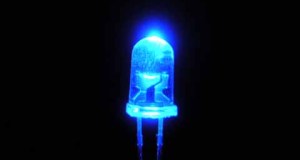Maintaining calcium levels in your reef aquarium is critical for the health and growth of your corals. Calcium is constantly being being depleted from your aquarium water because of the demand for calcium from new coral growth and coraline algae growth. Calcium must be replenished and maintained on an ongoing basis for your reef to thrive. There are many sources of calcium available on the market; liquid calcium, powder calcium, salt mixes with extra calcium. All of these products require frequent, if not daily, dosage to maintain calcium levels.
There is a better way; use a reactor. Using a Reactor is the best method to maintain calcium levels in your aquarium with a minimum of maintenance, and maximum results. There are two basic types of reactors to choose from, a CO2 powered Calcium reactor or line fed Kalkwasser Reactor. These two reactors accomplish the same goal in very different ways.
Calcium reactors supply a constant supply of calcium by introducing CO2 into a reaction chamber, which forms carbonic acid that dissolves a natural calcium carbonate media. Water is fed into the Calcium Reactor from your tank or sump, then the calcium rich effluent from the reactor is dripped back into the tank or sump at a controlled rate. The effluent from the reactor is not only calcium rich, but also has a high alkalinity to enhance your aquariums pH buffering ability. Basic units such as the Coralife Calcium Reactor are on the entry level, and units like the Precision Marine Professional reactor are available for serious reef hobbyists.
The effluent pH from a calcium reactor can be very low due to the carbonic acid formed when CO2 is introduced. Effluent pH should be checked regularly, the use of a quality pH monitor, such as the Pinpoint pH Meter by American Marine, is highly recommended. Using a pH controller, like the Milwaukee SMS122, to control the output of CO2 into your reactor will further safeguard your system from low pH conditions caused by overdosing of CO2.
Calcium hydroxide, or Kalkwasser as it has become commonly known,has long been considered and ideal source of calcium for reef aquariums, but ease of use and consistency of performance have turned aquarists away from the product. One of the biggest problems with using calcium hydroxide solution, is that it reacts with atmospheric CO2 and forms a calcium carbonate precipitate. As this precipitate forms it reduces the calcium level in the solution, and causes clogging of drip lines, and can irritate corals if introduced into the aquarium. Kalwasser Reactors, like the Professional Kalkreactor by Precision Marine, solve this problem and make the use of kalkwasser easier than ever. Kalkreactors are sealed units that prevent interaction with atmospheric CO2, so no precipitates are formed, and provide your aquarium with a constant supply of saturated kalkwasser solution. These units are best used in conjunction with an auto top off system, or a remote gravity fed reservoir and float valve. This way you can dose calcium while you are compensating for evaporation, allowing for slow addition of the saturated kalkwasser solution. Kalkwasser solutions have an extremely high pH and must be added very slowly to prevent rapid pH increases. Combining Kalkwasser addition and evaporation replenishment with use of a Kalkreactor makes what was previously a difficult product to use easy.
Choose your reactor, and spend more time enjoying your reef!
Dave
 That Fish Blog – Aquarium Advice and Information
That Fish Blog – Aquarium Advice and Information

